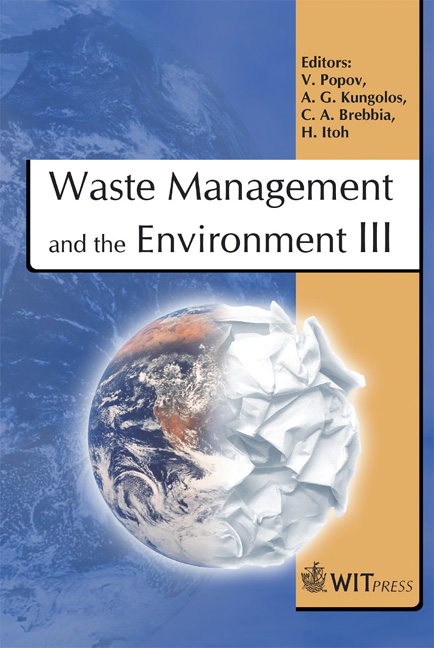Numerical Modelling Of A Bubbling Fluidized Bed Combustor
Price
Free (open access)
Transaction
Volume
92
Pages
10
Published
2006
Size
1,167 kb
Paper DOI
10.2495/WM060491
Copyright
WIT Press
Author(s)
S. Ravelli & A. Perdichizzi
Abstract
A numerical model of a bubbling fluidized bed combustor fed by refuse derived fuel is presented. The combustor is divided into two regions: the bed and the freeboard. The calculation of mass and energy fluxes entering from the bed into the freeboard provides the boundary conditions for the subsequent CFD analysis. The three-dimensional freeboard model, implemented by means of the commercial code FLUENT 6.1, is mainly concerned with employing the twomixture- fraction-pdf approach to track both the flue gas coming from the bed and the solid fuel particles that do not burn in the bed, but above it. The excess air is injected through four series of nozzles; the heat exchange between the combustion gases and the boiler tubes is also taken into account in the model. The comparison between the predicted and the experimental data shows a good agreement about chemical species concentrations, velocity and temperature profiles along the freeboard height. The reliability of the simulation results proves that CFD modelling is a valid instrument to analyse the behaviour of non conventional furnaces. Keywords: CFD modelling, fluidized bed combustion, freeboard, refuse derived fuel. 1 Introduction The fluidized bed combustor (FBC) is a flexible and reliable technology that carries out combustion at lower operating temperatures (700-950°C) in comparison with conventional boilers. So, it’s possible to reduce considerably the pollutants emitted with the flue gas; besides, limestone or dolomite can be brought into the bed to adsorb sulphur and halogen compounds. Carbon monoxide and unburned hydrocarbon discharged in atmosphere are very low
Keywords
CFD modelling, fluidized bed combustion, freeboard, refuse derived fuel.





